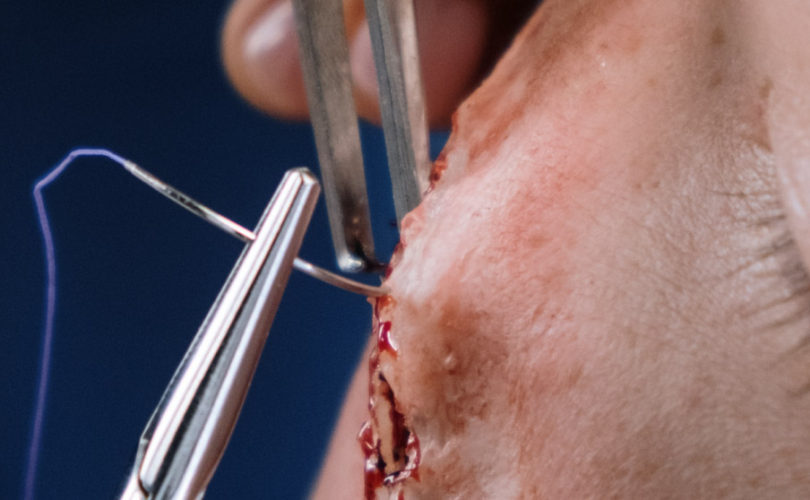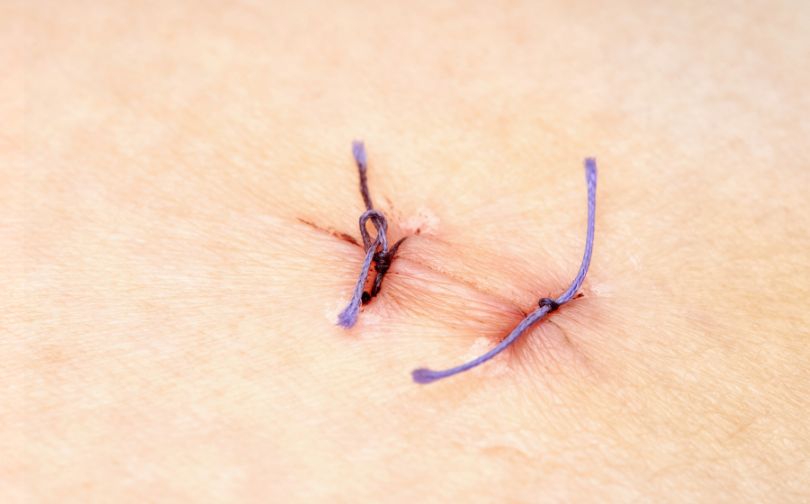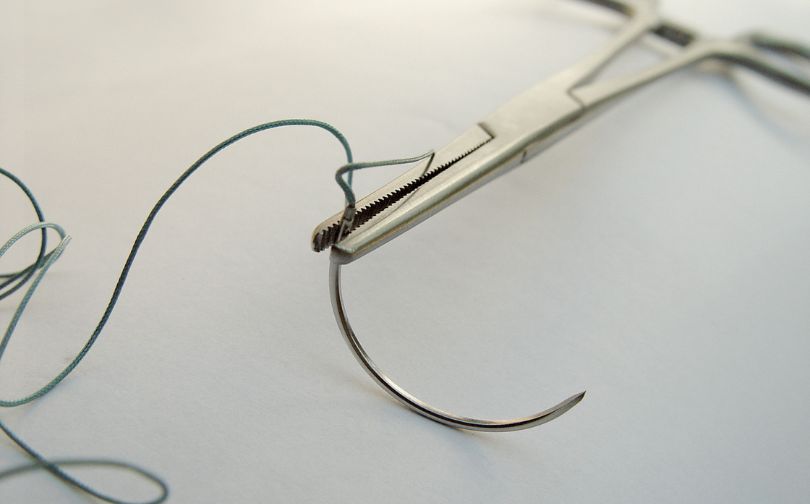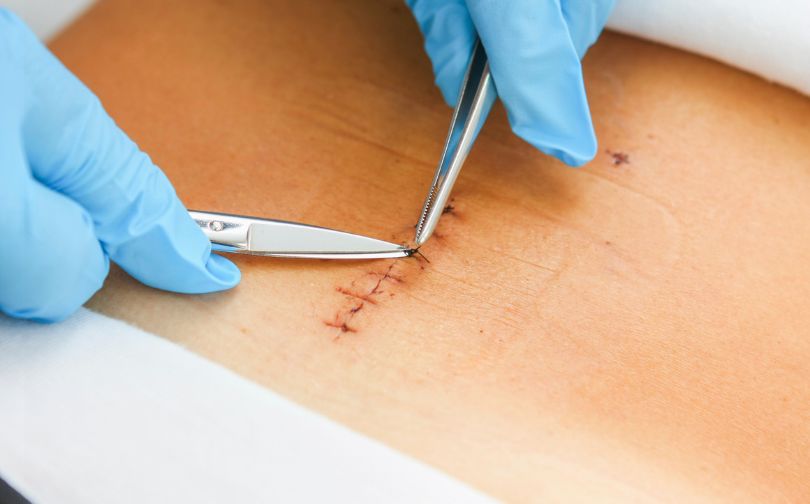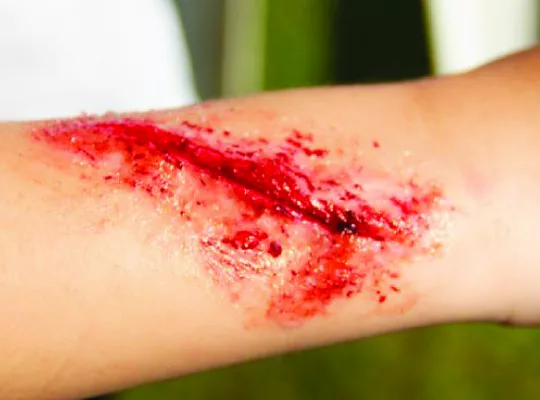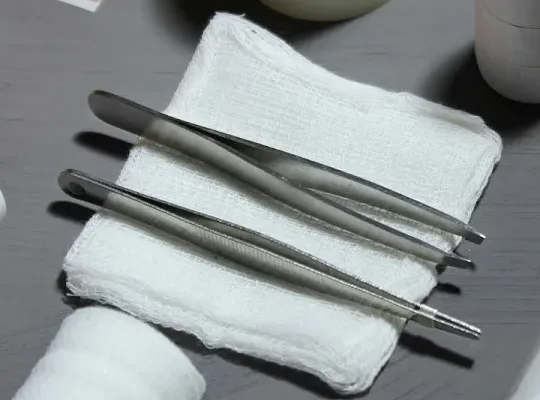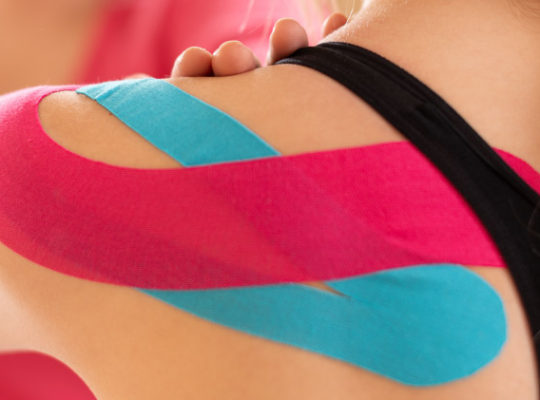When it comes to closing a wound after surgery or an injury, stitches and staples are two common options. But how do you know which one is right for you? Both methods have their advantages, but they also come with specific drawbacks that may influence healing, comfort, and scarring. For anyone facing this choice, it can feel like a lot to navigate.
One key fact is that staples are often used for larger wounds or areas where the skin is under tension, like the scalp. On the other hand, stitches offer more precision for areas needing finer closure.
In this article, we’ll break down the differences between stitches and staples, helping you understand when each method is used, how they affect healing, and what to expect during recovery. Ready to learn which option might suit you best?
Let’s dive into the details.
How Are Stitches and Staples Used?
Stitches and staples have the same job: to close large or complex wounds or incisions that the body would not be able to on its own.
Surgical Staples: a Brief Rundown
Surgical staples are very similar to the staples you use for paper, but they have more variation in shape and size to compensate for the type of wound they are being used on. The most common materials for surgical staples are titanium, plastic, and polylactide-polyglycolide copolymers. Titanium is the most common, as it is the strongest of the three, but some people can have a bad reaction to titanium, which is why plastic is used. Polylactide-polyglycolide copolymer is a dissolvable material that can be used when the wound is expected to heal relatively quickly. They are applied by holding the wound closed with a pair of forceps and then using a skin stapler to insert the staples.
Stitches: The Basics
Stitches are an extremely versatile tool for doctors. They can close a variety of wounds or incisions efficiently. Stitches are available in multiple different materials, making it easy to find an option that won’t cause a reaction. Stitches also have multiple types of absorbable and nonabsorbable materials, allowing doctors to provide the patient with the most optimal method for recovery.
Advantages and Disadvantages of Surgical Staples
Advantages of staples:
- Very sturdy, making the wound less likely to reopen.
- Application is very simple, allowing doctors to close wounds quickly and efficiently
- Very efficient with abdominal, uterine, organ (re)connection and removal, and closing wounds or incisions on the scalp.
- Can be less painful than stitches. Because staples are stronger than stitches, doctors need to apply fewer staples than stitches. This means a smaller area of skin is being disturbed so there is usually less pain.
- Can handle large wounds more efficiently than stitches.
Disadvantages of staples:
- Can be harder for the patient to care for
- Require a special tool to remove
- Require at least two doctors to administer, one to hold the wound together, one to apply the staples
- Less efficient for complex or deep wounds
- The stapler can easily malfunction, causing complications
- Can easily lead to complications due to improper application
- More expensive
- Often causes adverse psychological response
Advantages and Disadvantages of Stitches
Advantages of stitches:
- More material options means a lower chance for reaction
- More efficient for wounds that damage multiple layers of skin or tissue or have a complex shape
- Only need a pair of scissors or to be dissolved for removal
- Can be applied by a single doctor
- Easier to care for
- More versatile in their application
- Less expensive
- Fewer complications after application
Disadvantages:
- Take more time to apply
- Easy to break
- Can be more painful
- Can be less effective for large wounds
- Needle stick injuries
Is One Better Than the Other?
In short, no. Both options have their own advantages and disadvantages. There are many studies that compare the efficiency of staples and stitches, and the vast majority find little to no difference between the two.
However, the FDA moved surgical staples from a Class 1 to a Class 2 medical device in October 2021. These classes describe the risk a device has to the patient’s health or safety. From January 1, 2011, to March 31, 2018, the FDA collected over 41,000 medical device reports that detailed 366 deaths, over 9,000 serious injuries, and over 32,000 malfunctions for surgical staplers and staples used internally.
All this means for you is that if you undergo surgery that requires some form of wound closure, your doctor is more likely to use stitches. However, staples are more effective with C-sections and scalp wound closures.
What Are the Tips for Taking Care of My Stitches and Samples?
Taking care of stitches and staples properly is key to ensuring proper healing and preventing infections.
- Keep the Area Dry: For the first 24 to 48 hours, ensure the area remains dry to lower the risk of infection. After this time, gently wash around the wound with soap and water as recommended.
- Clean the Wound Gently: Use cool water and mild soap to clean the surrounding skin without scrubbing directly on stitches or staples. Pat the area dry with a clean towel instead of rubbing to avoid irritation.
- Replace Bandages Regularly: If your healthcare provider advises using a bandage, change it according to their instructions. This keeps the wound safe from dirt and bacteria, reducing the chance of infection.
- Avoid Soaking the Wound: Steer clear of soaking the wound in water, such as during baths or swimming, until it fully heals or you receive approval from your healthcare provider.
- Limit Physical Activity: Refrain from heavy lifting, contact sports, or other activities that may stretch or reopen the wound. This will help prevent complications during the healing process.
- Protect the Wound from Sun Exposure: After the wound has healed, either cover it or apply sunscreen to prevent skin discoloration from sun exposure, which can affect the appearance of the scar.
Pulling it All Together
The use of surgical staples and stitches is going to come down to the doctor applying them, and the injury or procedure. As long as you are being treated by a competent doctor with properly functioning equipment and you properly care for your staples or stitches, complications are likely not going to be an issue.
FAQs
What Should I Do If My Stitches Become Wet Accidentally?
If your stitches accidentally get wet, gently pat the area dry using a clean towel. Avoid rubbing the wound to prevent irritation or damage to the stitches. It’s important to keep the area clean and dry for proper healing.
How Can I Tell If My Stitches Are Infected?
Infection signs include redness, swelling, pain, or pus discharge from the wound, along with a foul smell. You may also feel feverish or have chills. If these symptoms appear, contact your healthcare provider immediately for advice and care.
When Should I Remove the Bandage Over My Stitches?
The timing for removing the bandage depends on your doctor’s instructions. Some may advise removal after 24 hours, while others recommend leaving it longer to protect the wound. Always follow the specific advice provided by your doctor.
How Long Do Stitches Typically Stay in Place?
Stitches generally stay in place for 7 to 14 days, depending on the wound’s location and size. Your doctor will let you know when it’s time to have them removed based on your healing progress.

